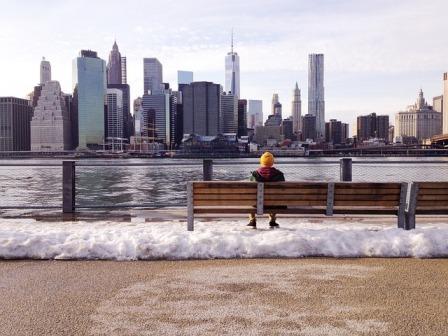
Our previous blog discussed symptoms of cold stress and ways to deal with it. However, it is better to prevent it altogether. Below are tactics that workers and employers can use to keep job sites healthy and safe in New York City’s cold winters.
Keep an eye out for temperature changes. Rapid or unexpected temperature changes are associated with an uptick in cold-related injuries. Workers report for work not dressed properly for the conditions because they (and their employers) did not pay attention. They often suffer the consequences.
Wear the right clothing for the climate. Don’t be a tough guy; wear three layers of clothing and protect your hands, feet and head.
Drink lots of liquid. One consequence of exposure to cold temperatures is the suppression of feeling thirsty. If you don’t feel thirsty, you forget to drink. That’s why it is important to drink lots of warm, sweet beverages like hot sweet tea, coffee and cocoa to prevent dehydration.
Eat more when you work outdoors in the winter. Workers in cold climates who wear heavy, protective clothing use up more heat and burn more calories.
Insist on more breaks. It is crucial to give employees time to warm up after working in the cold or in high winds during cold weather. Both workers and management should insist on breaks to keep core body temperatures from dropping and warm up extremities that might become frostbitten.
Protect work areas from wind. Workers exposed to wind chill temperatures of 20 degrees or less should have access to a heated shelter.
Watch what you put in your body if you work outside in the winter. Alcohol, nicotine, caffeine and many medications can change how a body responds to cold. These substances may also impair judgment and sensation.
Schedule outside work during the warmest hours of the day. Also, try to minimize outside work that is stationary or sedentary. Sitting or standing still slows circulation.
Educate employees and employers about symptoms of cold stress. Such symptoms could include heavy shivering, discomfort, severe fatigue, uncontrollable sleepiness and euphoria.
Use the buddy system. Work in pairs when performing tasks in extreme cold so partners can monitor each other and obtain help quickly.
Construction workers, police officers, firefighters, maintenance crews and anyone who works outside in the winter for more than a few minutes must pay attention to the environment and know how to respond to it. Moreover, employers are responsible for protecting workers against the consequences of extreme weather conditions. In short, pay attention and take appropriate acti0n when the temperatures drop.
Source: OSHA

